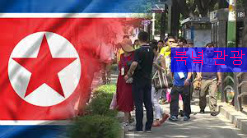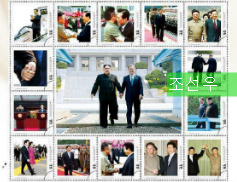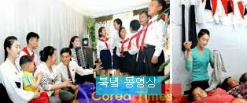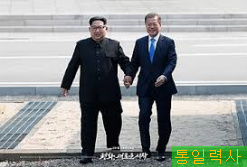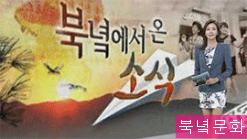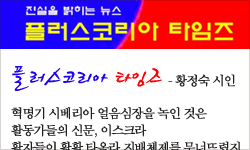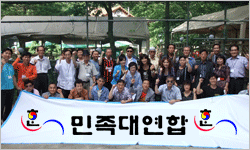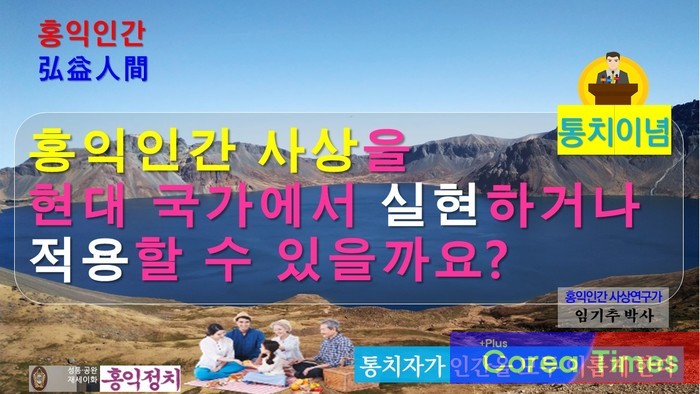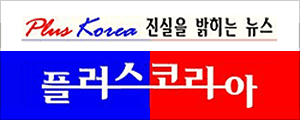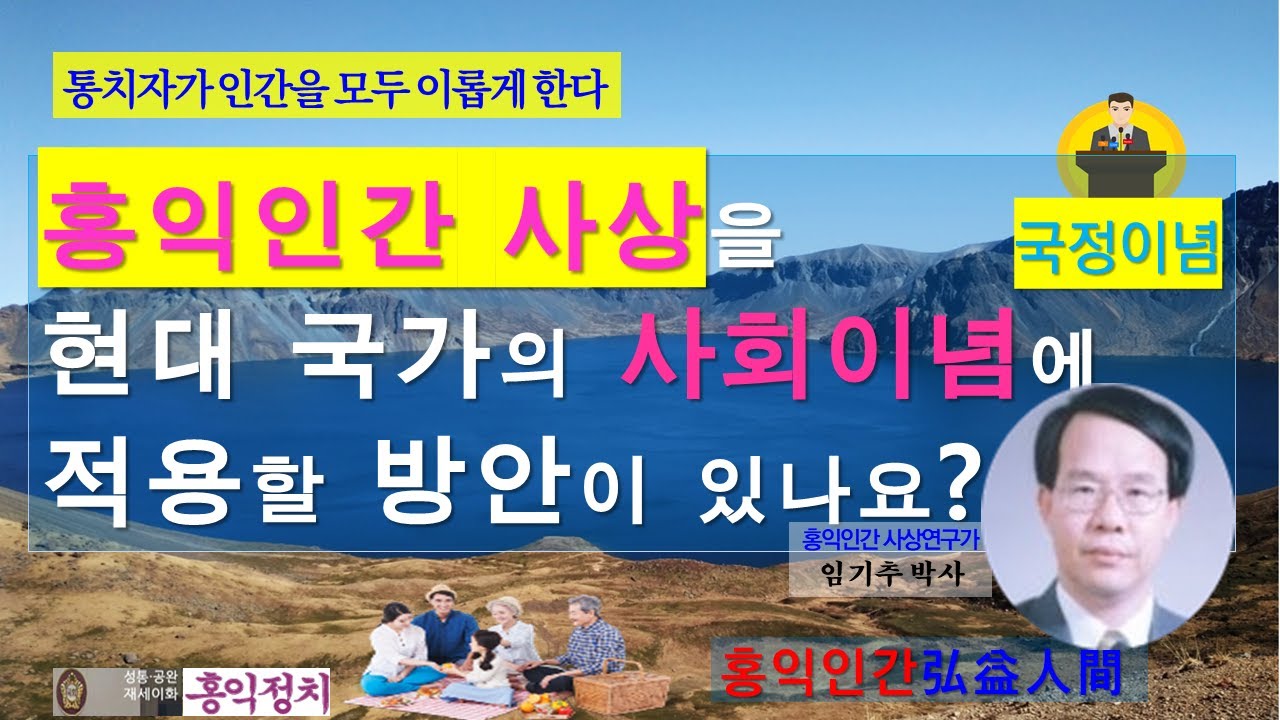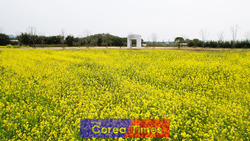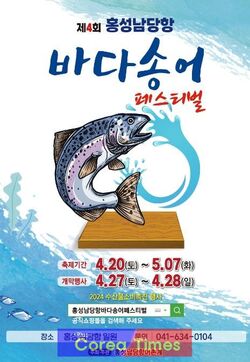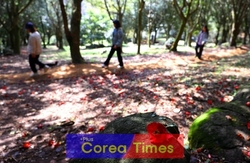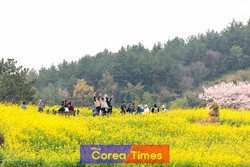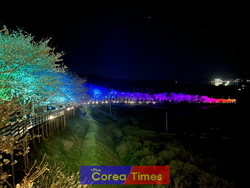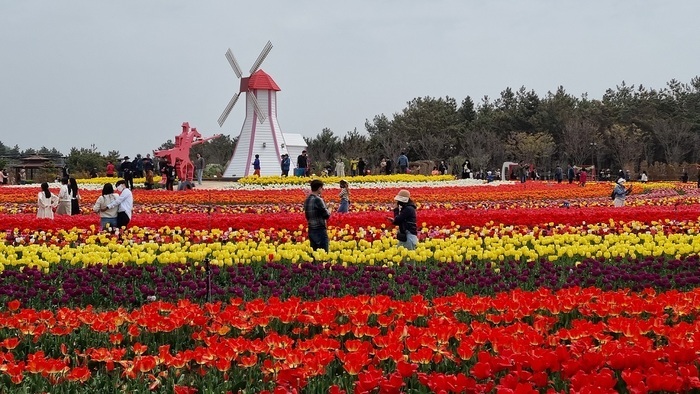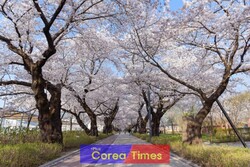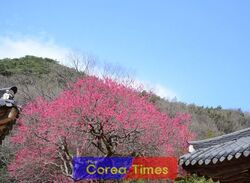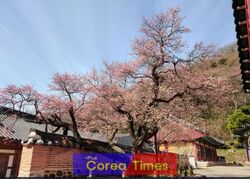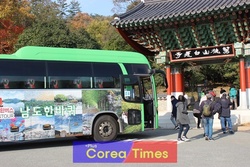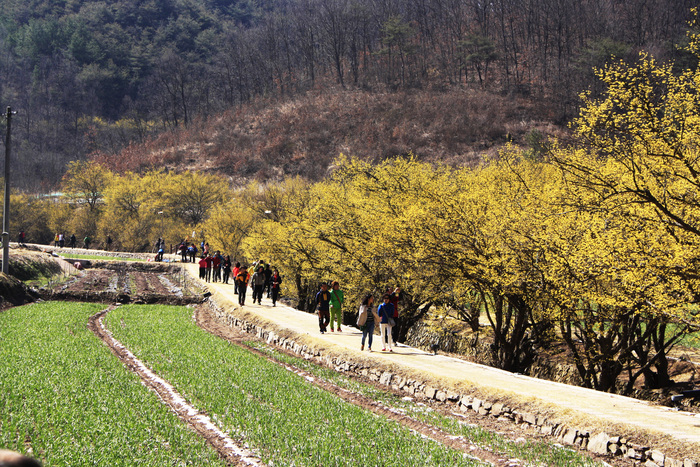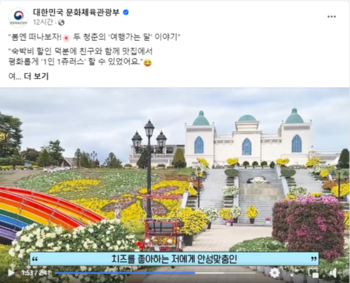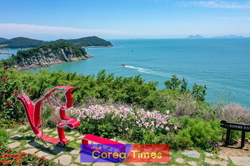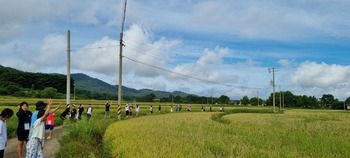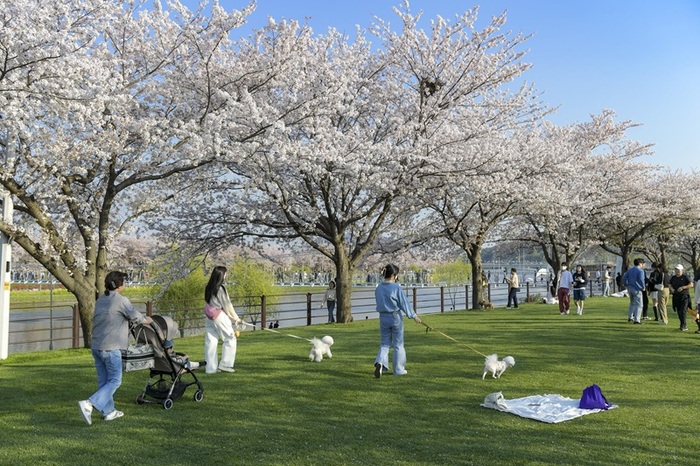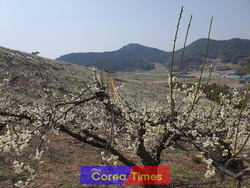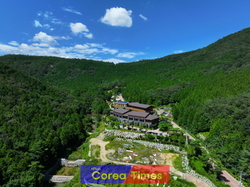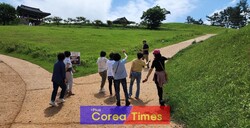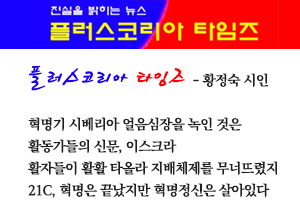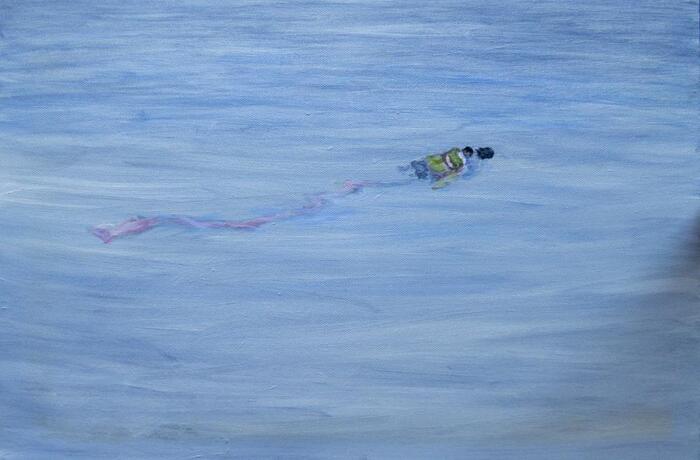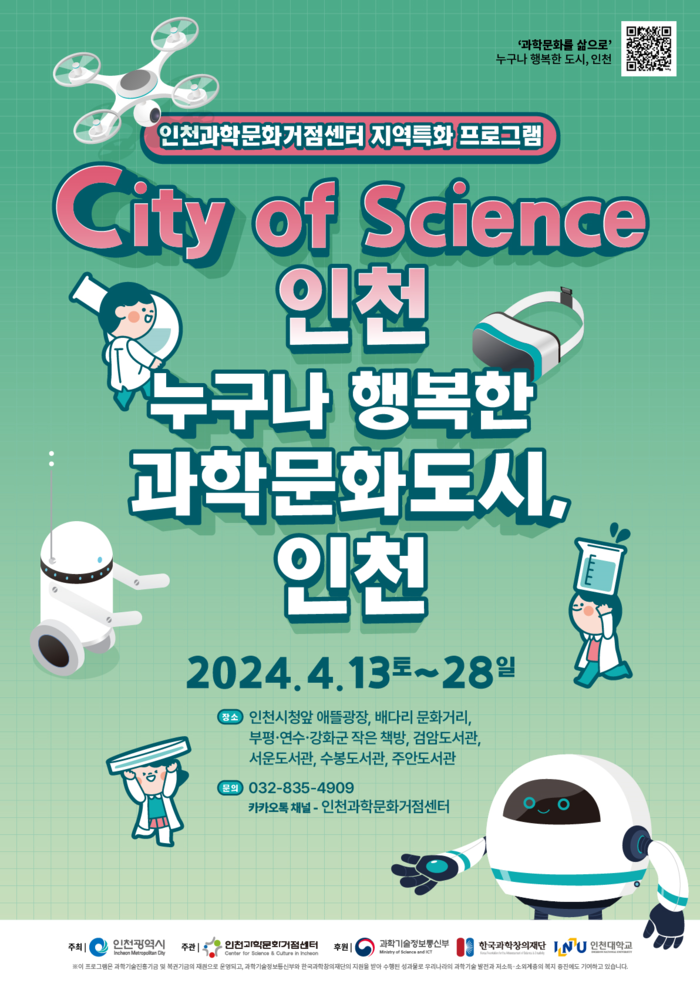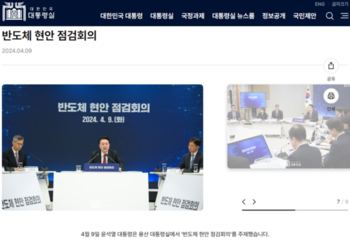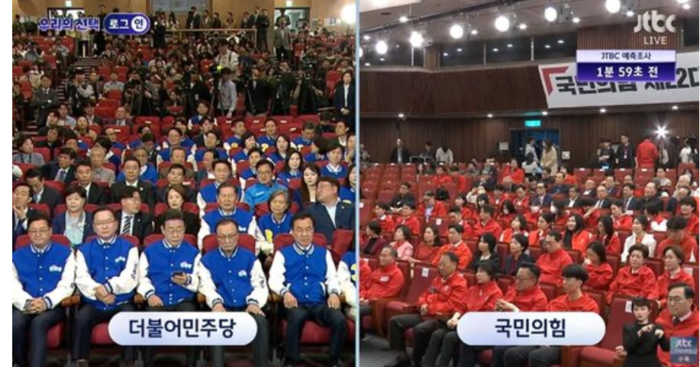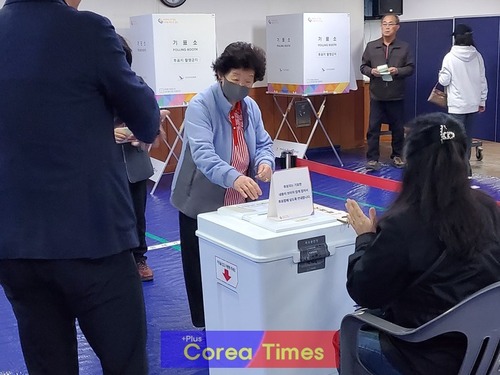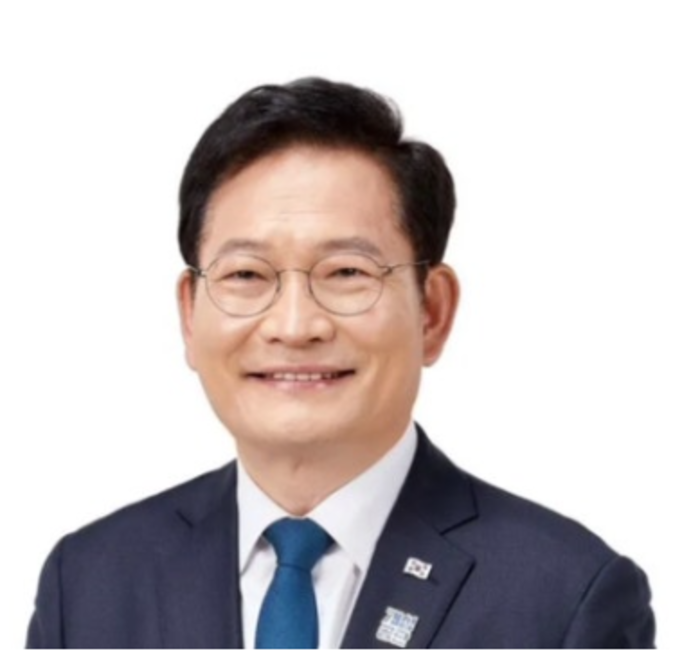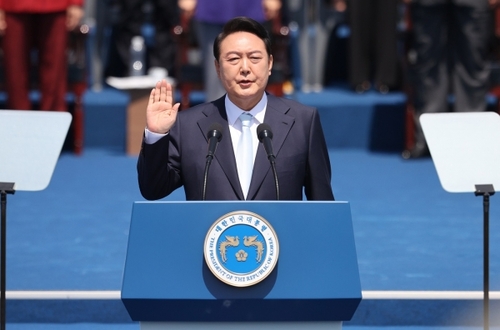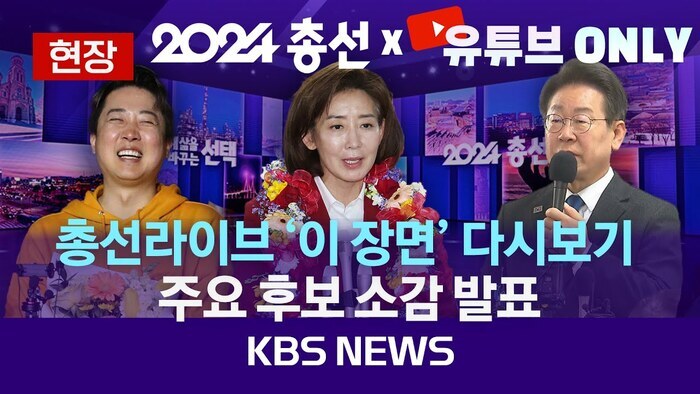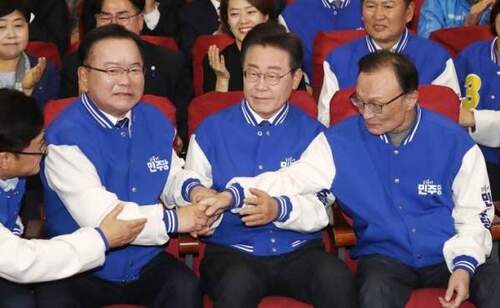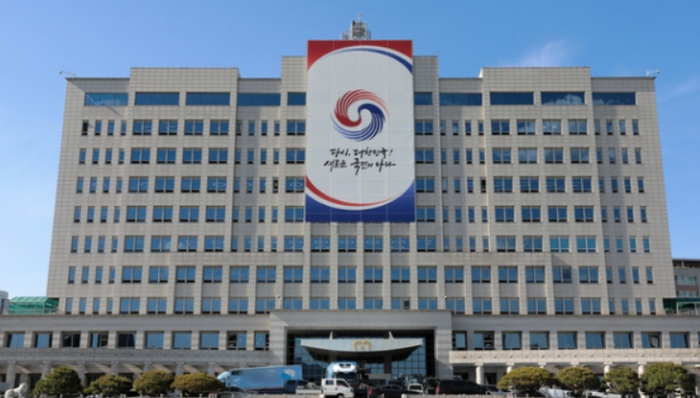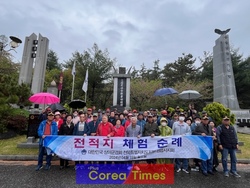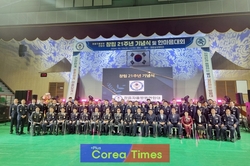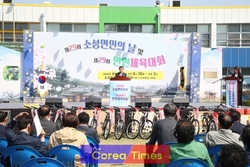|
[21세기 세계 주도의 핵심사상으로 일컬어지고 있는 홍익인간 사상에 관하여, 우리나라가 이제 지향해야 할 새로운 홍익인간 사상의 현대화 적용이론을 개발하여 제시하고자 한다. 본 내용은 임기추박사의 저서 “홍익인간 사상의 현대화 적용이론”(2022)을 60회로 나누어 연재한다. 편집자 주]
4. 홍익인간 실현자의 특징적 유형
홍익인간 실현자의 3가지 유형 개요
홍익인간이란 ‘성통・공완’ 즉 ‘도’를 깨우쳐야만 요건이 충족되고 ‘덕’ 즉 ‘재세이화’를 실천하여야만 진정한 의미에 성취되는 것으로 언급한 바 있다(장영주, 2013; 조옥구, 2012). 이 홍익인간 실현자의 특징적 설명으로 3가지 유형을 나누어 볼 수 있다 먼저, 삼일신고(三一神誥) 「진리훈」에 의한 망녕된 삼망(三妄), 즉 감・식・촉(感・息・觸)의 18경계를 다 버려 성품을 통하고 공덕을 완수하는 성통・공완자(性通·功完者)로서의 홍익인간(弘益人間)의 유형이 있다(한담, 2000). 둘째로 ‘성통・공완(性通·功完)’의 도와 ‘재세이화(在世理化)’의 덕을 실현 완성한 홍익인간의 유형이 있다고 볼 수 있다(조옥구, 2012). 셋째로 신인 환인을 비롯한 신인 환웅, 신인 단군 또는 신인 왕검과 같이 천지 우주광명의 심법이 열린 천왕처럼 하느님과 하나된 신인합일(神人合一)의 홍익인간으로 이해되는 유형이 있다(박병섭, 2011).
성통・공완자의 홍익인간 유형
먼저, 삼일신고(三一神誥) 「진리훈」에 의한 망녕된 삼망(三妄) 즉, 감・식・촉(感・息・觸)의 18경계를 다 버려서, 성품을 통하고 공덕을 완수하는 성통・공완자(性通·功完者)로서의 홍익인간(弘益人間)의 유형이 있다(한담, 2000, 이하 같음). 삼일신고(三一神誥) 「진리훈」에 의하면 일관화행(一意化行)하여야 반망즉진(反妄卽眞)하니 성통・공완(性通·功完)이 시(是)라 했다. “한뜻으로 실행하여 망녕된 것을 되돌리면 진리에 이르니 이것이 성품을 통하고 공덕을 완수하는 것”이라 했으니, 이 성통・공완자(性通·功完者)야 말로 인간의 궁극적 목적인 홍익인간(弘益人間)인 것이다. ‘망녕된 것’이란 삼망(三妄)을 말하는 것인데, 즉 감・식・촉(感・息・觸)이 그것이다.
감(感, 마음, 감정)에는 희・구・애・로・탐・염(喜懼哀怒貪厭)으로 기쁨・두려움・슬픔・성냄・탐욕・싫어함의 기억이 있어 이것을 그치니 지감(止感)이라 한다. 식(息, 기, 숨결)에는 분・란・한・열・진・습(芬爛寒熱震濕)으로 향기・썩은내・차가움・더위・메마름과 습기의 기억이 있어 이것을 고르니 조식(調息)이라 한다. 촉(觸, 몸, 감각)에는 성・색・취・미・음・저(聲色臭味淫抵)로 소리・색깔・냄새・맛・성욕・부딪침 등의 기억이 있어서 이것을 끊으니 금촉(禁觸)이라 한다. 이 지감・조식・금촉을 반망즉진(反妄卽眞)의 3법수행이다. 3법수행이란 바로 지감・조식・금촉의 실천 수행을 말한다. 이 중에 지감이 으뜸으로 관(貫, 꿰뚫어)하여 통하는 것이고, 다음은 조식으로 어울려 아는 것이고, 다음은 금촉으로 채워서 보하는 것이라 했으니, 이것이 성품을 통하여 천명(天命)을 알고 신기(神機)를 보정(保正)함으로 홍익인간에 이르는 것이다. 이들로 구성된 세계가 바로 재세이화(在世理化)이다. 그것은 홍익인간에 의해서 저절로 형성되는 것이다.
홍익인간을 위한 행동의 실행으로 변화되고, 거짓기억이 사라지고 참기억만 남아서 잡념이 사라지며, 하느님인 자신의 ‘본성’에 훤히 통하니 하느님의덕과 지혜와 능력을 온전히 갖추어서, 대덕(大德)・대혜(大慧)・대력(大力)을 얻은 홍익인간의 특징적 경지가 있다. 바로 성통・공완의 완성 이후에, 1) 기쁨, 두려움, 슬픔, 성냄, 탐욕, 싫어함의 거짓 마음(감정), 2) 향기, 썩은내, 차가움, 더위, 메마름, 습기의 거짓 기(숨결), 3) 소리, 색깔, 냄새, 맛, 성욕, 부딪침의 거짓 몸(감각) 기억과 영상이 다 사라져버려서 다 없어진 홍익인간의 특징을 열거할 수 있다.
일부 기록에 의하면, 일찍이 신교수행을 했던 대표적인 인물로 을지문덕, 연개소문, 이순신, 서산대사, 사명대사 등 헤아릴 수 없이 많은 것으로 알려져 있다. 또한 근세 조선시대에는 책을 저술하여 후세에 전한 학자들도 있으니, 정염(정북창)의 단가요결, 이지함의 복기문답, 곽재우의 복기조식진결, 권극중의 참동계주해를 들 수 있다. 김예몽의 의방유취와 허준의 동의보감에 보면, 중국의 각종 선대 기공법과 도인법과 호흡법이 수록되어 있다.
성통・공완과 재세이화의 도덕완성자인 홍익인간 유형
둘째로 ‘성통・공완(性通·功完)’의 도와 ‘재세이화(在世理化)’의 덕을 실현 완성한 홍익인간의 유형이 있다고 본다(조옥구, 2012). 홍익인간(弘益人間)이란 단순히 독자적으로 존재하는 것이 아니라 ‘성통·공완(性通·功完) 재세이화(在世理化)’와 짝을 이루어, 구조적인 관계를 형성하고 있다는 언급에서홍익인간의 유형을 이해할 수 있다. 그러니까 ‘성통・공완 재세이화’는 ‘홍익인간’을 실현하는 2가지 방법론 및 전제조건에 해당하고, 이 2가지 방법론(즉, 전제조건의 실현방법)을 통하면 ‘홍익인간’에 이를 수 있음을 말해주는 것이 이들 ‘성통・공완’, ‘재세이화’, ‘홍익인간’의 상호관계라 할 수 있다.
우리 선조들은 인류 최초로 ‘홍익인간’의 높은 가치를 창출하였을 뿐만 아니라, 이론적으로 이 이념에 도달하는 2가지 방법까지 밝혀 놓은 것이다. 그렇다면 홍익인간에 이르는 2가지 방법, 즉 ‘성통・공완(性通·功完)’과 ‘재세이화(在世理化)’는 무엇을 의미하는 것인지 보자면, ‘성통・공완(性通·功完)’은 내적으로 끊임없이 본성(性, 진리)에 도달하려는 노력을 기울여 마침내 공을 이루(완성)었음을 나타내는 말이다. 이것을 다른 글자로 표현한다면 ‘道(길 도)’가 된다. 따라서 ‘성통・공완’이 곧 ‘도(道)’인 셈이다. ‘성통・공완’에는 ‘도(道)’의 내용이 담겨 있기 때문이다. ‘재세이화(在世理化)’는 ‘성통・공완’한 자가 자신의 깨우침을 토대로 이 세상이 ‘참되게 하다’라는 내용을 나타내는 것으로 이것을 다른 말로 ‘德(큰 덕)’이 된다. ‘덕(德)’을 풀이하면 ‘재세이화’가 되는 것이다. 성통・공완(性通·功完)을 구심력이라 한다면 재세이화(在世理化)는 원심력이 된다. ‘도’가 내적으로 존재의 의미와 가치를 추구하는 정신작용이라면 ‘덕’은 ‘성통・공완’을 전제로 세상에서 펼치게 되는 ‘도’의 행위인 셈이다.
이처럼 ‘도’와 ‘덕’이 제대로 실현된 상태를 ‘홍익인간’이라고 하는 것이다. ‘성통・공완’과 ‘재세이화’는 ‘홍익인간’의 2개의 날개인 셈이지만 ‘홍익인간’을 실현하기 위해서는 우선 ‘성통・공완’하는 일이 중요하다. 이것이 전제되지 않으면 제대로 ‘재세이화’할 수가 없기 때문이다. 따라서 ‘홍익인간’이라는 개념의 입장에서 본다면 ‘성통・공완’ 즉, ‘도’를 깨우치지 못하고 ‘덕’ 즉, ‘재세이화’를 실천한다는 것은 진정한 의미에서 ‘홍익인간’의 성취라고는 말할 수 없다(장영주, 2013).
따라서 성통・공완의 도와 재세이화의 덕을 제대로 실현하고, 완성하기 위한 국내외적 사명을 다할 수 있는 홍익인간의 특징이 있다고 하겠다. 이러한 관점에서 볼 때 홍익인간의 재세이화를 위한 국내적 주요사명으로 지도자 및 공직자의 도덕성 이해 및 증진, 법제 이해 및 경쟁력 향상, 헌법 및 법제적 개선, 사회규범 준수의 제고와 같은 과제의 추진이 기대된다. 그리고 오늘날 한민족은 오늘의 현실적 과제들을 해결하고 인류사회의 평화와 번영을 이룩하기 위하여 홍익인간의 지구촌적 주요사명으로 몇가지를 들 수 있다. 인간존중 의식과 민주화, 세계평화 및 경제문제와 인류사회 복지, 지구촌 문화, 지구의 환경 등 분야에서 능동적이고 적극적으로 인류를 위한 홍익인간의 사명을 추구하여야 할 것이다.
신인 환인・환웅・단군의 홍익인간 유형
셋째로 신인 환인을 비롯한 신인 환웅, 신인 단군 또는 신인 왕검과 같이 천지 우주광명의 심법이 열린 천왕처럼, 하느님과 하나된 신인합일(神人合一)의 홍익인간 유형이 있다(박병섭, 2011). 역사적 기록에서 신인합일(神人合一)의 홍익인간과 관련된 내용을 찾아보고자 한다. 박병섭(2011)의 논문을 참고하여 역사적 신인(神人)의 천왕에 주목한다. 삼성기에 의하면, 환인이라 불리는 7왕이 있고, 환웅 천왕 으로 불린 18왕이 있다. 단군세기에는 신인(神人) 단군왕검이라 불린 첫번째 단군을 포함해 단군이라 불린 47명의 왕이 기록되어 있다. 조선왕조실록 「태조실록」 11권, 6년(1397, 정축. 명 홍무(洪武) 30년) 3월 8일(신유) 1번째 기사에 나타난 내용을 보면, 옛날에 신인(神人)이 단목(檀木) 아래에 내려와, 나라사람들이 그를 임금으로 세우고 단군(檀君)이라 불리었다. 때는 당요(唐堯) 원년(무진)이었다는 기록이다.산해경 제1기에 등장하는 웅산(熊山)의 신인(神人)을 통해 좀더 고대로 소급해 볼 수 있다.
또한 고기, 삼한관경본기에 의하면, 왕검 왕호는 사와라 환웅 1년에 ‘왕검’이 신왕호 이고, 당시 구왕호는 ‘(신인)대인 환웅’, ‘(신인)환인 천왕’이고, 460년 후에 ‘신인 왕검’이 등장하고 있다. 산해경 「중산경」 편에 의하면, 다시 동쪽으로 150리를 가면 웅산이라는 곳이 있다. 이곳에 굴이 있어서 곰의 굴이고 항상 신인이 드나든다. 여름에는 열리고 겨울에는 닫히는데 ...라고 하는 구절이 나온다. 규원사화 「단군기(檀君紀)」 고열가 임금 기록을 보면, “계묘년은 고열가 임금의 원년, ... 단검신인이 큰 위업을 처음으로 펼친 때부터 역년이 47세에 2,096년이다. 단군이 이미 아사달로 옮겨 거처하였으나 나라 사람들은 여전히 받들어 존중하였으며 제후들 역시 감히 핍박하는 자가 없었다.”라고 한다. 태백일사에도 “삼신(三神)은 하늘을 생성하고(生天) 만물을 가꾸시며(造物) 환인은 사람을 가르쳐 의(義)를 세우니, 이로부터 자손이 서로 의(義)와 교(敎)를 전하고, 현묘한 법도를 깨달아서 광명이세(光明理世)”했다고 한다.
고동영(1986)에 의하면, 환국에는 백성들의 수가 많았으나 생활 걱정이 없었다. 처음에 환인이 천산에 살면서 도(道)를 얻어 오래 살았으며 몸에 병이 없었다. 하늘의 이치대로 사람을 교화하여 싸움이 없었으며, 스스로 힘을 내어 일을 하므로 추위와 굶주림이 없었다고 한다. 배달시대 거발한 환웅은 천부경과 삼일신고를 백성들에게 가르쳤다. 하늘의 이치대로 인간을 모두 유익하게 하기 위하여 곡식, 목숨, 형벌, 질병, 선악 등 360여사를 풍백(입법관), 우사(행정관), 운사(사법관)의 분권 통치하였다. 또 환웅은 천부경(天符經), 삼일신고(三一神誥), 참전계경(參佺戒經)을 모두 익혀 실천하면서 득도(得道)하여, 신을 마음대로 부리는 경지에 이르렀으니 실로 3・7일, 즉 21일만에 도(道)를 얻었다는 기록도 있다.
* 참고문헌 목록은 “홍익인간 사상의 현대화 적용이론” 도서(2022, 교보퍼플)를 참조바랍니다.
*필자/임기추
홍익경영전략원 경영학박사・원장/유튜브 홍익나라(https://www.youtube.com/channel/UCp77kpD3e2PDSg6OHI8LJTw) 채널운영자(tranlim@hanmail.net).
*아래 영문은 위 기사를 '구글 번역'으로 번역한 [기사전문]입니다. 영문 번역에 오류가 포함되어 있을 수 있음을 전제로 합니다. *The English below is the [full text] of the article translated by 'Google Translate'. It is assumed that the English translation may contain errors.
[Regarding Hongik Ingan Ideology, which is said to be the core ideology leading the world in the 21st century, I would like to develop and present a theory of modernization application of the new Hongik Ingan ideology that Korea should now pursue. This article is a series of 60 episodes of Dr. Lim Ki-chu’s book “Modernization Theory of Hongik Ingan Ideology” (2022, Kyobo Purple). Editor's Note]
[Modernization Theory of Hongik Ingan Ideology -22] Characteristic Type of Hongik Ingan Realizer
4. Characteristic Type of Hongik Ingan Realizer
Overview of the 3 Types of Hongik Ingan Realizers
Hongik Ingan mentioned that only when 'Seongtong Gongwan' (Seongtong Gongwan), or 'Do' is realized, the requirements are met, and the true meaning is achieved only when 'Dug', or 'Jaeseihwa' is practiced. Yes (Jang Young-joo, 2013; Jo Ok-gu, 2012). As a characteristic explanation of this Hongik Ingan realizer, three types can be divided. First of all, in order to escape from the three hopes of the Samilsingo (三一神誥) 「Jinrihun」, that is, abandon all 18 boundaries of Gam·Sik·Chok (感·息·觸) through the nature. There is a type of Hongik Ingan (弘益人間) as a Seongtong Gongwan person who completes meritorious deeds (Handam, 2000). Second, it can be seen that there is a type of Hongik Ingan who realized and completed Do of 'Seongtong Gongwan (性通功完)' and Dug of 'Jaeseihwa (在世理化)' ( Cho Ok-gu, 2012). Thirdly, there is a type that is understood as Hongik Ingan, who is united with God, like the heavenly king, who is one with God, such as the god Hwanin, the god Hwanung, the god Dangun, or the god Wanggeom. (Park Byeong-seop, 2011).
Hongik Ingan type of Seongtong Gongwan
First, by discarding all the 18 boundaries of Gam·Sik·Chok (感·息·觸), the three oblivious three networks according to the Samilsingo (三一神誥)「Jinrihun」 There is a type of Hongik Ingan (弘益人間) as a Seongtong Gongwan (性通功完者) who completes (Handam, 2000, hereinafter the same). According to the Samilsingo (三一神誥) 「Jinrihun」, you must do one thing consistently to obtain trueness. “If you practice with one accord and undo what has been lost, you will arrive at the truth. This is through character and fulfillment of merit.” This Seongtong Gongwan (性通·功完者) is the ultimate goal of human beings, Hongik Ingan (弘益人間). ‘Things that are lost’ refers to the three wishes (三妄), that is, Gam·Sik·Chok (感·息·觸).
In Gam (sensitivity, mind, emotion), there are memories of joy, fear, sadness, anger, greed, and dislike, and this is called Jigam (止感). It has memories of fragrance, rotten smell, cold, heat, dryness and dampness, so it is called Josik (調息). Since there is a memory of bumping, etc., and this is cut off, it is called Geumchok (禁觸) This is Jigam, Josik, and Geumchok, which are the three Dharma practices of anti-mang and Jin-jin. The 3 Dharma practices refer to the practice of Jigam, Josik, and Geumchok, among which Jigam is the first to penetrate and penetrate, followed by Josik. The next step is to fill it with Geumchok and see it, so this is to know the mandate of heaven through character and to correct divine gears to reach Hongik Ingan. The world composed of is Jaeseihwa (在世理化), which is formed spontaneously by Hongik Ingan.
Transformed by the execution of actions for Hongik Ingan, false memories disappear and only true memories remain, and wandering thoughts disappear. There is a characteristic state of Hongik Ingan who has attained great virtue, great wisdom, and great power. Right after the completion of Seongtong Gongwan, 1) false hearts (emotions) of joy, fear, sorrow, anger, greed, and dislike, 2) false feelings of fragrance, rotten smell, cold, heat, dryness, and damp qi (breath), 3) sound, color, smell, taste, sexual desire, false bodily (sensory) memories and images of bumping all disappeared, so the characteristics of Hongik Ingan can be listed.
According to some records, it is known that there are countless numbers such as Eulji Mundeok, Yeon Gaesomun, Yi Sun-shin, Seosan Daesa, and Samyeong Daesa as representative figures who practiced new teaching in the early days. In addition, there are scholars who wrote books and handed them down to posterity in the early Joseon Dynasty, such as Jeong Yeom (Jeong Buk-chang)'s Dangayoyeol, Lee Ji-ham's Bokgi Questionnaire, Kwak Jae-woo's Bokgijosik Jingyeol, and Kwon Geukjung's Chamdonggyehaeju. . According to Kim Ye-mong's Uibang Yuchwi and Heo Jun's Donguibogam, various ancestral Qigong techniques, Daoyin techniques, and breathing techniques from China are included.
Type of Hongik Ingan, the Moral Perfection of Seongtong Gongwan and Jaeseihwa
Second, there is a type of Hongik Ingan who realized and completed the Do of 'Seongtong Gongwan (性通功完)' and the Dug of 'Jaeseihwa (在世理化)' (Ok-gu Cho). , 2012). Hongik Ingan (弘益人間) does not simply exist independently, but forms a structural relationship by pairing with 'Seongtong Gongwan (性通功完) Jaeseihwa (在世理化)' From the mention that there is, we can understand the type of Hongik Ingan. So, 'Seongtong Gongwan and Jaeseihwa' correspond to two methodologies and prerequisites to realize 'Hongik Ingan'. Through these two methodologies (i.e., the method of realizing the prerequisites), it is possible to reach 'Hongik Ingan', these 'Seongtong・Gongwan' and 'Jaeseihwa' )' and 'Hongik Ingan'.
Our ancestors not only created the high value of ‘Hongik Ingan’ for the first time in mankind, but also theoretically revealed two ways to reach this ideology. Then there are two ways to reach Hongik Ingan. In other words, to see what 'Seongtong Gongwan (性通功完)' and 'Jaeseihwa (在世理化)' mean, 'Seongtong Gongwan (性通功完)' ' is a word that expresses that you have finally achieved (completion) by making an effort to reach the nature (性, truth) internally. If you express this with another letter, it becomes ‘Do’. Therefore, ‘SeongtongㆍGongwan’ is ‘Do(道)’. This is because ‘Seongtong・Gongwan’ contains the content of ‘Do’. 'Jaeseihwa (在世理化)' refers to the content that 'Seongtong Gongwan' makes the world 'true' based on his enlightenment, and in other words, 'Dug' ' becomes If ‘Dug(德)’ is translated, it becomes ‘Jaeseihwa’. If Seongtong Gongwan (性通功完) is the centripetal force, Jaeseihwa (在世理化) is the centrifugal force. If 'Do' is a mental action that internally pursues the meaning and value of existence, 'Dug' is an act of 'Do' that is unfolded in the world on the premise of 'Seongtong Gongwan'.
In this way, the state in which ‘Do’ and ‘Dug’ are properly realized is called ‘Hongik Ingan’. ‘Seongtong Gongwan’ and ‘Jaeseihwa’ are the two wings of ‘Hongik Ingan’. However, in order to realize ‘Hongik Ingan’, it is important to first do ‘Seongtong Gongwan’. This is because if this is not premised, ‘Jaeseihwa’ cannot be properly performed. Therefore, from the standpoint of the concept of 'Hongik Ingan', it is true that practicing 'Dug' or 'Jaeseihwa' without realizing 'Seongtong Gongwan', or 'Do' cannot be said to be the achievement of 'Hongik Ingan' (Jang Young-joo, 2013).
Therefore, it can be said that there are characteristics of Hongik Ingan who can fulfill their domestic and international missions to properly realize and complete the Do of Seongtong Gongwan and the Dug of Jaeseihwa. From this point of view, there is a major domestic mission for the Jaeseihwa of Hongik Ingan. It is expected to promote tasks such as understanding and promoting the morality of leaders and public officials, improving understanding of laws and competitiveness, improving the constitution and laws, and enhancing compliance with social norms. And today, the Korean people can take several of Hongik Ingan's major global missions in order to solve today's realistic challenges and achieve peace and prosperity in human society. We must actively and actively pursue the mission of Hongik Ingan for humanity in the fields of human respect and democratization, world peace and economic issues, human social welfare, global culture, and the earth's environment.
Types of Hongik Ingan, Hwanin, Hwanung, and Dangun
Thirdly, there is the Hongik Ingan type of God-man unity with God, like the Heavenly King, who has the mind of the heavens and the universe, such as the god Hwanin, the god Hwanung, the god Dangun, or the god Wanggeom(Park Byeong-seop, 2011). I would like to find out the contents related to Hongik Ingan of the unity of gods and men in historical records. Referring to Park Byeong-seop's (2011) thesis, we pay attention to the heavenly king of the historical new man. According to Samseonggi, there are 7 kings called Hwanin and 18 kings called Hwanung Cheonwang. In the Dangun Segi, 47 kings called Dangun were recorded, including the first Dangun, who was called the divine man Dangun Wanggeom. According to the contents of the 1st article on March 8 (Shinyu), Volume 11, Year 6 (1397, Jeongchuk, 30th year of Hongwu in Ming) of 『Annals of Taejo』 of the Annals of the Joseon Dynasty, He came down under Danmok, and the people of the country made him king and called him Dangun. It is recorded that it was the first year of the Tang Dynasty (Mujin). It can be traced back to ancient times through the deities of Mt.
In addition, according to Gogi and Samhangwangyeongbongi, the royal title of Wanggeom was the new king in the first year of Sawara Hwanung, and the old royal titles at that time were '(new) great man Hwanung', '(new) Hwanin heaven', and 460 years later' The rookie Wang Sword is appearing. According to the “Zhongsan-gyeong” section of Sanhae-gyeong, there is a place called Mt. Ung if you go 150 li to the east. There is a den here, so it is a bear's den, and newcomers always come and go. It opens in summer and closes in winter... According to Gyuwonsahwa’s 「Dangungi(檀君紀)」, “The year of Gyemyo is the first year of King Goyeolga, and the calendar year from the first great achievement of the dagger rookie was 2,096 years at the age of 47. Dangun had already moved to Asadal, but the people of the country still respected and respected him, and no one dared to persecute the feudal lords.” In Taebaek Ilsa, “Three gods create the heavens and take care of all things, and Hwanin teaches people to establish righteousness. It is said that he passed on the teachings and realized the wonderful law, and became “the light of the light.”
According to Koh Dong-young (1986), there were many people in Hwanguk, but they did not have to worry about life. At first, Hwanin lived in the mountains of Heaven, obtained the Dao, lived a long time, and was free from disease. It is said that there was no fighting because he edified people according to the principles of heaven, and there was no cold or hunger because he worked with his own strength. In the Baedal era, Hwanung taught the people the Cheonbugyeong and the Samil Singo. He governed 360 items such as grain, life, punishment, disease, and good and evil with decentralized authority among Poongbaek (legislative official), Usa (administrative official), and Unsa (judicial official) in order to benefit all human beings according to the principles of heaven. In addition, Hwanung learned and practiced the scriptures of Cheonbugyeong, Samilsingo, and Chanjeongyegeong, and attained the Dao. In other words, there is also a record of attaining the Dao in 21 days.
* For a list of references, please refer to the book “Theory of Modernization Application of Hongik Ingan Thought” (2022, Kyobo Purple).
*Writer/Lim Ki-chu
Doctor of Business Administration, Hongik Institute for Management Strategy & Director/YouTube Hongik Nara Channel Operator (tranlim@hanmail.net). <저작권자 ⓒ pluskorea 무단전재 및 재배포 금지>
홍익경영전략원 원장・경영학박사, 홍익사상학자 / 유튜브 홍익나라 채널운영자 / 단군정신선양회 학술위원 / 전 에너지경제연구원 연구위원 / 전 행정안전부 시도합동평가단 평가위원 / 전 국무총리 기후변화협약대책위원회 평가위원 / 전 대통령자문 지속가능발전위원회 전문위원 / 전 대통령직속 민주평화통일자문회의 자문위원 / 홍익인간 사상관련 50여권의 저서 및 11편의 학술논문 발표

hongikingan, hongik ingan, jaeseihwa, 홍익인간, 재세이화, 관련기사목록
|
임기추 홍익사상
많이 본 기사
|



